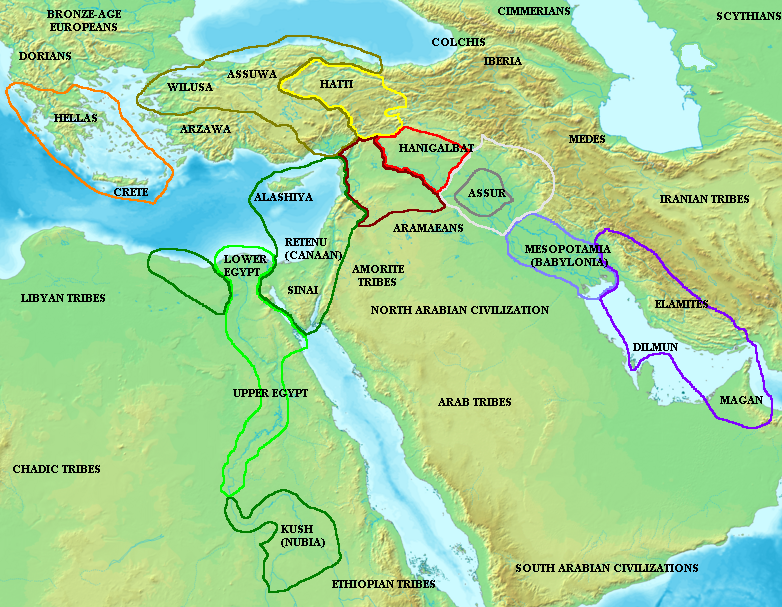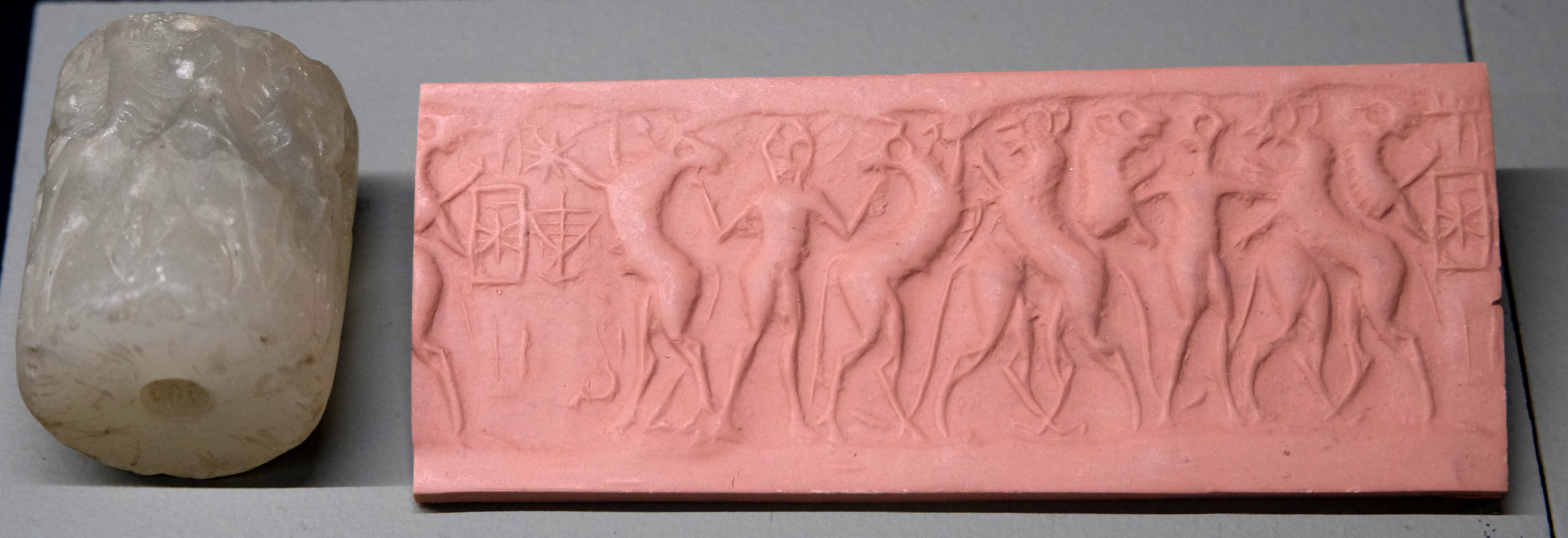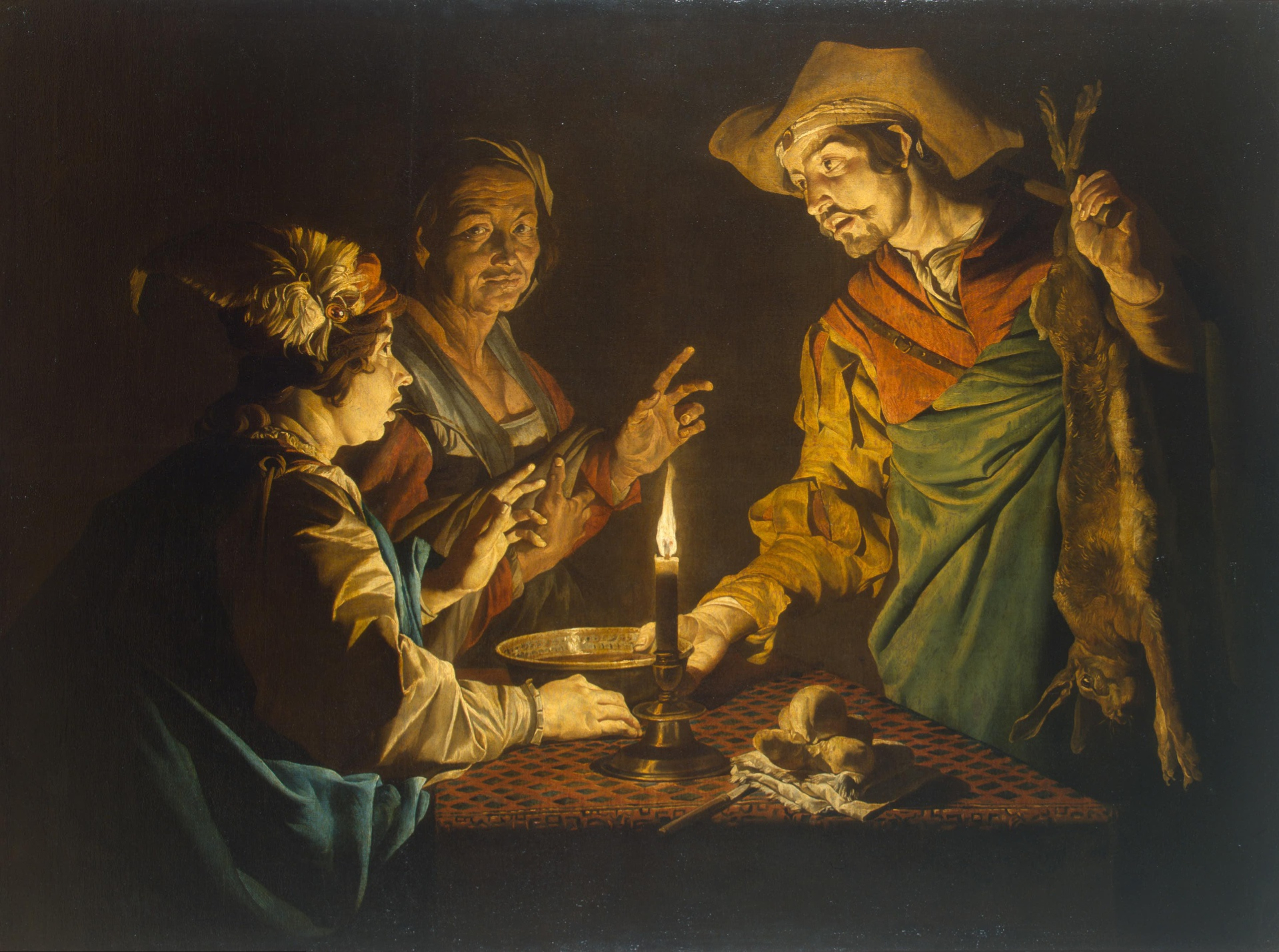|
Joseph And His Brothers
''Joseph and His Brothers'' (''Joseph und seine Brüder'') is a four-part novel by Thomas Mann, written over the course of 16 years. Mann retells the familiar stories of Genesis, from Jacob to Joseph (chapters 27–50), setting it in the historical context of the Amarna Period. Mann considered it his greatest work. The tetralogy consists of: * ''The Stories of Jacob'' (''Die Geschichten Jaakobs''; written December 1926 to October 1930, Genesis 27–36) * ''Young Joseph'' (''Der junge Joseph''; written January 1931 to June 1932, Genesis 37) * ''Joseph in Egypt'' (''Joseph in Ägypten''; written July 1932 to 23 August 1936, Genesis 38–39) * ''Joseph the Provider'' (''Joseph, der Ernährer''; written 10 August 1940 to 4 January 1943, Genesis 40–50) Themes Mann's presentation of the ancient Orient and the origins of Judaism is influenced by Alfred Jeremias' 1904 ''Das Alte Testament im Lichte des Alten Orients'', emphasizing Babylonian influence in the editin ... [...More Info...] [...Related Items...] OR: [Wikipedia] [Google] [Baidu] |
WikiProject Novels
A WikiProject, or Wikiproject, is a Wikimedia movement affinity group for contributors with shared goals. WikiProjects are prevalent within the largest wiki, Wikipedia, and exist to varying degrees within sister projects such as Wiktionary, Wikiquote, Wikidata, and Wikisource. They also exist in different languages, and translation of articles is a form of their collaboration. During the COVID-19 pandemic, CBS News noted the role of Wikipedia's WikiProject Medicine in maintaining the accuracy of articles related to the disease. Another WikiProject that has drawn attention is WikiProject Women Scientists, which was profiled by '' Smithsonian'' for its efforts to improve coverage of women scientists which the profile noted had "helped increase the number of female scientists on Wikipedia from around 1,600 to over 5,000". On Wikipedia Some Wikipedia WikiProjects are substantial enough to engage in cooperative activities with outside organizations relevant to the field at issue. For e ... [...More Info...] [...Related Items...] OR: [Wikipedia] [Google] [Baidu] |
Tushratta
Tushratta (Akkadian: and ) was a king of Mitanni, c. 1358–1335 BCE, at the end of the reign of Amenhotep III and throughout the reign of Akhenaten. He was the son of Shuttarna II. Tushratta stated that he was the grandson of Artatama I. His sister Gilukhipa (Gilu-ḫepa in Hurrian) and his daughter Tadukhipa (Tadu-ḫepa in Hurrian) were married to the Egyptian pharaoh Amenhotep III; Tadukhipa later married Akhenaten who took over his father's royal harem. He had been placed on the throne after the murder of his brother Artashumara. He was probably quite young at the time and was destined to serve as a figurehead only but he managed to dispose of the murderer. A tablet was found in a Mitanni building at Tell Brak which stated it was witnessed "in the presence of Tushratta, the king" and had a seal of an earlier king Shaushtatar on the reverse which was a common practice. Name Recorded in three distinct spellings—, , —Tushratta's name is an Akkadianised rendition of an Ind ... [...More Info...] [...Related Items...] OR: [Wikipedia] [Google] [Baidu] |
Harrowing Of Hell
In Christian theology, the Harrowing of Hell ( la, Descensus Christi ad Inferos, "the descent of Christ into Hell" or Hades) is an Old English and Middle English term referring to the period of time between the Crucifixion of Jesus and his resurrection. In triumphant descent, Christ brought salvation to the souls held captive there since the beginning of the world.Warren, Kate Mary (1910)"Harrowing of Hell" ''The Catholic Encyclopedia''. Vol. 7. New York: Robert Appleton. Accessed 3 March 2013. Jesus Christ's descent into the world of the dead is referred to in the Apostles' Creed and the Athanasian Creed (), which state that he "descended into the underworld" (), although neither mention that he liberated the dead. His descent to the underworld is alluded to in the New Testament in , which states that the "good tidings were proclaimed to the dead". The ''Catechism of the Catholic Church'' notes , which states that "hristdescended into the lower parts of the earth", as also ... [...More Info...] [...Related Items...] OR: [Wikipedia] [Google] [Baidu] |
Babylonian Captivity
The Babylonian captivity or Babylonian exile is the period in Jewish history during which a large number of Judeans from the ancient Kingdom of Judah were captives in Babylon, the capital city of the Neo-Babylonian Empire, following their defeat in the Jewish–Babylonian War and the destruction of Solomon's Temple in Jerusalem. The event is described in the Hebrew Bible, and its historicity is supported by archaeological and extra-biblical evidence. After the Battle of Carchemish in 605 BCE, the Babylonian king Nebuchadnezzar II besieged Jerusalem, which resulted in tribute being paid by the Judean king Jehoiakim. In the fourth year of Nebuchadnezzar II's reign, Jehoiakim refused to pay further tribute, which led to another siege of the city in Nebuchadnezzar II's seventh year (598/597 BCE) that culminated in the death of Jehoiakim and the exile to Babylonia of his successor Jeconiah, his court, and many others; Jeconiah's successor Zedekiah and others were exiled when Nebuch ... [...More Info...] [...Related Items...] OR: [Wikipedia] [Google] [Baidu] |
Tammuz (deity)
Dumuzid or Tammuz ( sux, , ''Dumuzid''; akk, Duʾūzu, Dûzu; he, תַּמּוּז, Tammûz),; ar, تمّوز ' known to the Sumerians as Dumuzid the Shepherd ( sux, , ''Dumuzid sipad''), is an ancient Mesopotamian god associated with shepherds, who was also the first and primary consort of the goddess Inanna (later known as Ishtar). In Sumerian mythology, Dumuzid's sister was Geshtinanna, the goddess of agriculture, fertility, and dream interpretation. In the ''Sumerian King List'', Dumuzid is listed as an antediluvian king of the city of Bad-tibira and also an early king of the city of Uruk. In ''Inanna's Descent into the Underworld'', Inanna perceives that Dumuzid has failed to properly mourn her death and, when she returns from the Underworld, allows the '' galla'' demons to drag him down to the Underworld as her replacement. Inanna later regrets this decision and decrees that Dumuzid will spend half the year in the Underworld, but the other half of the year with her, w ... [...More Info...] [...Related Items...] OR: [Wikipedia] [Google] [Baidu] |
Demeter
In ancient Greek religion and mythology, Demeter (; Attic: ''Dēmḗtēr'' ; Doric: ''Dāmā́tēr'') is the Olympian goddess of the harvest and agriculture, presiding over crops, grains, food, and the fertility of the earth. Although she is mostly known as a grain goddess, she also appeared as a goddess of health, birth, and marriage, and had connections to the Greek Underworld, Underworld. She is also called Deo (). In Greek tradition, Demeter is the second child of the Titans Rhea (mythology), Rhea and Cronus, and sister to Hestia, Hera, Hades, Poseidon, and Zeus. Like her other siblings but Zeus, she was swallowed by her father as an infant and rescued by Zeus. Through her brother Zeus, she became the mother of Persephone, a fertility goddess. One of the most notable Homeric Hymns, the ''Homeric Hymn to Demeter'', tells the story of Persephone's abduction by Hades and Demeter's search for her. When Hades, the King of the Underworld, wished to make Persephone his wife ... [...More Info...] [...Related Items...] OR: [Wikipedia] [Google] [Baidu] |
Ishtar
Inanna, also sux, 𒀭𒊩𒌆𒀭𒈾, nin-an-na, label=none is an ancient Mesopotamian goddess of love, war, and fertility. She is also associated with beauty, sex, divine justice, and political power. She was originally worshiped in Sumer under the name "Inanna", and later by the Akkadians, Babylonians, and Assyrians under the name Ishtar, (occasionally represented by the logogram ). She was known as the "Queen of Heaven" and was the patron goddess of the Eanna temple at the city of Uruk, which was her main cult center. She was associated with the planet Venus and her most prominent symbols included the lion and the eight-pointed star. Her husband was the god Dumuzid (later known as Tammuz) and her , or personal attendant, was the goddess Ninshubur (who later became conflated with the male deities Ilabrat and Papsukkal). Inanna was worshiped in Sumer at least as early as the Uruk period ( 4000 BCE – 3100 BCE), but she had little cult activity before the conques ... [...More Info...] [...Related Items...] OR: [Wikipedia] [Google] [Baidu] |
Inanna
Inanna, also sux, 𒀭𒊩𒌆𒀭𒈾, nin-an-na, label=none is an List of Mesopotamian deities, ancient Mesopotamian goddess of love, war, and fertility. She is also associated with beauty, sex, Divine law, divine justice, and political power. She was originally worshiped in Sumer under the name "Inanna", and later by the Akkadian Empire, Akkadians, Babylonian religion, Babylonians, and Assyrians under the name Ishtar, (occasionally represented by the logogram ). She was known as the "Queen of heaven (antiquity), Queen of Heaven" and was the patron goddess of the Eanna temple at the city of Uruk, which was her main Cult (religious practice), cult center. She was associated with the planet Venus and her most prominent symbols included the Lion of Babylon, lion and the Star of Ishtar, eight-pointed star. Her husband was the god Dumuzid (later known as Tammuz) and her , or personal attendant, was the goddess Ninshubur (who later became conflated with the male deities Ilabrat ... [...More Info...] [...Related Items...] OR: [Wikipedia] [Google] [Baidu] |
Esau
Esau ''Ēsaû''; la, Hesau, Esau; ar, عِيسَوْ ''‘Īsaw''; meaning "hairy"Easton, M. ''Illustrated Bible Dictionary'', (, , 2006, p. 236 or "rough".Mandel, D. ''The Ultimate Who's Who in the Bible'', (.), 2007, p. 175 is the elder son of Isaac in the Hebrew Bible. He is mentioned in the Book of Genesis and by the prophets Obadiah and Malachi. The Christian New Testament alludes to him in the Epistle to the Romans and in the Epistle to the Hebrews. According to the Hebrew Bible, Esau is the progenitor of the Edomites and the elder brother of Jacob, the patriarch of the Israelites.Metzger & Coogan (1993). ''Oxford Companion to the Bible'', pp. 191–92. Jacob and Esau were the sons of Isaac and Rebecca, and the grandsons of Abraham and Sarah. Of the twins, Esau was the first to be born with Jacob following, holding his heel. Isaac was sixty years old when the boys were born. Esau, a "man of the field", became a hunter who had "rough" qualities that distinguished him fr ... [...More Info...] [...Related Items...] OR: [Wikipedia] [Google] [Baidu] |
Descent To The Underworld
A katabasis or catabasis ( grc, κατάβασις, from "down" and "go") is a journey to the underworld. Its original sense is usually associated with Greek mythology and Classical mythology more broadly, where the protagonist visits the Greek underworld, also known as Hades. The term is also used in a broad sense of any journey to the realm of the dead in other mythological and religious traditions. A katabasis is similar to a ''nekyia'' or necromancy, where someone experiences a vision of the underworld or its inhabitants; a ''nekyia'' does not generally involve a physical visit, however. One of the most famous examples is that of Odysseus, who performs something on the border of a ''nekyia'' and a katabasis in book 11 of ''The Odyssey''; he visits the border of the realms before calling the dead to him using a blood ritual, with it being disputed whether he was at the highest realm of the underworld or the lowest edge of the living world where he performed this. Overvie ... [...More Info...] [...Related Items...] OR: [Wikipedia] [Google] [Baidu] |
Underworld
The underworld, also known as the netherworld or hell, is the supernatural world of the dead in various religious traditions and myths, located below the world of the living. Chthonic is the technical adjective for things of the underworld. The concept of an underworld is found in almost every civilization and "may be as old as humanity itself". Common features of underworld myths are accounts of living people making journeys to the underworld, often for some heroic purpose. Other myths reinforce traditions that entrance of souls to the underworld requires a proper observation of ceremony, such as the ancient Greek story of the recently dead Patroclus haunting Achilles until his body could be properly buried for this purpose. Persons having social status were dressed and equipped in order to better navigate the underworld. A number of mythologies incorporate the concept of the soul of the deceased making its own journey to the underworld, with the dead needing to be taken a ... [...More Info...] [...Related Items...] OR: [Wikipedia] [Google] [Baidu] |
Monotheism
Monotheism is the belief that there is only one deity, an all-supreme being that is universally referred to as God. Cross, F.L.; Livingstone, E.A., eds. (1974). "Monotheism". The Oxford Dictionary of the Christian Church (2 ed.). Oxford: Oxford University Press. A distinction may be made between exclusive monotheism, in which the one God is a singular existence, and both inclusive and pluriform monotheism, in which multiple gods or godly forms are recognized, but each are postulated as extensions of the same God. Monotheism is distinguished from henotheism, a religious system in which the believer worships one God without denying that others may worship different gods with equal validity, and monolatrism, the recognition of the existence of many gods but with the consistent worship of only one deity. The term ''monolatry'' was perhaps first used by Julius Wellhausen. Monotheism characterizes the traditions of Bábism, the Baháʼí Faith, Cheondoism, Christianity,Christianity's ... [...More Info...] [...Related Items...] OR: [Wikipedia] [Google] [Baidu] |






.jpg)



_(Musée_du_Caire)_(2076972086).jpg)